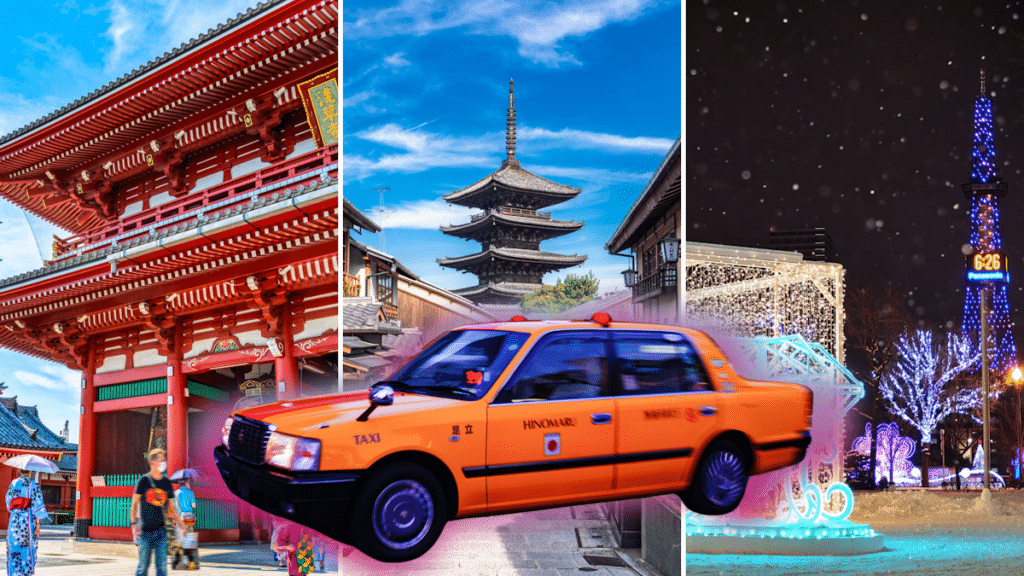With Japan continuing to welcome record numbers of tourists, the country’s transportation systems are struggling to keep up. In particular, taxis in cities like Tokyo are often maxed out at peak times. A new partnership between several companies wants to relieve that by testing out taxis that don’t require a driver.
This week, taxi hailing app service GO Taxi announced the new partnership in conjunction with taxi company Nihon Kotsu and Waymo, Google’s self-driving car subsidiary. Waymo currently powers the technology behind Google’s self-driving car, which it employs to verify roads and create street views for Google Maps.
The three companies say they’ll work together to pilot Waymo’s self-driving car technology to fuel additional taxi services in Tokyo starting in 2025. Tokyo and other cities in Japan are struggling to add additional taxi capacity in the face of population decline and chronic labor shortages.
According to Nikkei, the companies will pilot 25 vehicles in the Tokyo Metropolis in the cities of Minato, Shinjuku, Shibuya, Chiyoda, Chuo, Shinagawa, and Koto.
The vehicles will fall under Level 4 of Japan’s five-level rating system for autonomous vehicles, which allows for completely autonomous operation without a driver in limited areas. Japan has one of the most advanced legal frameworks for autonomous vehicles, making it fertile ground for Waymo to grow its self-driving business.
GO Inc. has been active in providing solutions to meet Japan’s rising demand for taxi services. We wrote earlier this year about the relaunch of the GO Taxi app, which now supports multiple languages and doesn’t require a local phone number, making it accessible to tourists.
Safety issues with Waymo linger
 Picture: Various / PIXTA(ピクスタ)
Picture: Various / PIXTA(ピクスタ)
Generally, Japan has forbidden non-licensed gig economy workers from serving as drivers on services like Uber. In Japan, the Uber app has operated as a proxy for calling a licensed taxi.
The government has relaxed that somewhat, enabling gig workers to accept rides in certain areas and only during peak times. However, taxi services remain in low supply, with companies struggling to find drivers in a tight – and ever-shrinking – labor market.
Planning a trip to Japan? Get an authentic, interpreted experience from Unseen Japan Tours and see a side of the country others miss!

“Noah [at Unseen Japan] put together an itinerary that didn’t lock us in and we could travel at our own pace. In Tokyo, he guided us personally on a walking tour. Overall, he made our Japan trip an experience not to forget.” – Kate and Simon S., Australia

See a side of Tokyo that other tourists can’t. Book a tour with Unseen Japan Tours – we’ll tailor your trip to your interests and guide you through experiences usually closed off to non-Japanese speakers.


Want more news and views from Japan? Donate $5/month ($60 one-time donation) to the Unseen Japan Journalism Fund to join Unseen Japan Insider. You’ll get our Insider newsletter with more news and deep dives, a chance to get your burning Japan questions answered, and a voice in our future editorial direction.
On the one hand, the new initiative could address these real and chronic problems in Japan’s tourism infrastructure. I’ve written about how the boom in tourism and the lack of taxis has led to a boom in “white taxis,” unlicensed taxi services that advertise on foreign-hosted websites. The prevalence of white taxis operating with zero oversight presents a potential safety issue to unsuspecting tourists.
On the other hand, Waymo’s technology isn’t perfect. The company rolled out its robotaxi service in the US state of Arizona earlier this year. After 22 reports of traffic violations and an accident involving a utility pole, they recalled 672 vehicles. That followed a recall of 444 vehicles in February.
Waymo has since updated the software in these cars to include critical technology that (double checks to make sure I’m reading that right) helps the cars avoid stationary utility poles. That hasn’t solved all of the vehicles’ issues, however. In August, a Waymo taxi with a passenger inside veered into oncoming traffic.
Waymo’s vehicles could ultimately increase Japan’s strapped taxi capacity. But will they be safe and respect the rules of the road?
We’ll find out in real time next year.


AloJapan.com